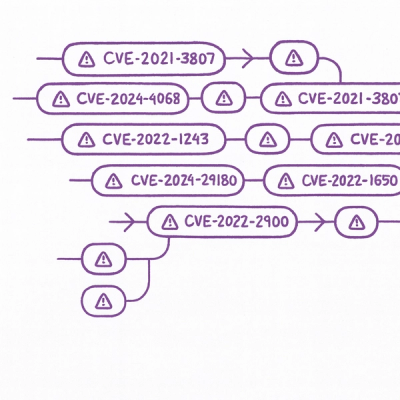
Security News
New Website “Is It Really FOSS?” Tracks Transparency in Open Source Distribution Models
A new site reviews software projects to reveal if they’re truly FOSS, making complex licensing and distribution models easy to understand.
Remarkably can be used as template enginge generating HTML pages by calling "pure" ruby methods, e.g.: html do header do title "my header" end body do h1 "big header" ul do (1..2).each do |n| li "line #{n}" end end end end
This beautiful approach allows ruby control statements while generating the desired page without the hassle other template engines have when mixing HTML tags and ruby control.
A remarkably fact about Remarkably is, that is does not know anything about HTML tags. It handles the generating of the desired page source by using the ruby mechanism of the "method_missing" message: every(!) unkown method will be recovered by generating appropriate HTML statements.
One of the consequences of approach is, that the parameters of such a "tag" must follow some rules: it have to look like sym(args, hash, &block) that means, eventual arguments must be set before an eventual hash, which sets the tag attributes, followed by an eventual block, which contains included other tags.
Sounds terrible complicated, but it is not, e.g.: the ruby statement a('Home', :href => "#{rs(:index)}") will generate after the ruby interpolation Home
To generate an anchor with a graphic icon like
![]() can be produced e.g. by
def gen_link(txt, href, icon)
a(:href => href, :title => txt) do
img(:src => icon, :border => 0, :alt => txt)
end # a
end # genlink
gen_link('Help', "#{rs(:help)}", 'icons/help.png')
You see, it is also possible to call methods when generating the page.
can be produced e.g. by
def gen_link(txt, href, icon)
a(:href => href, :title => txt) do
img(:src => icon, :border => 0, :alt => txt)
end # a
end # genlink
gen_link('Help', "#{rs(:help)}", 'icons/help.png')
You see, it is also possible to call methods when generating the page.
This shows another challenge: you can not generate a tag, which name conflicts with a well known ruby method, e.g.: p "this is some text" will use the kernel method p to print the message to the console. To generate a paragraph, you can use an upcase P like P "this is another paragraph" Dont worry, Remarkably uses .downcase when generating the code:
this is another paragraph
which keeps it XHTML conform.The missing_method approach also has the consequence, that Reamrkably can not check for valid HTML tags, e.g.: xyz(:abc => "nonsens") generates a syntatic correct, but semantic wrong output So check careful the page source offered from your browser.
There are at least two differences to Markaby: the "syntactic" sugar for .class and .id! is not supported, e.g.: div.myclass must be edited to div(:class => 'myclass') and div.myid! must be edited to div(:id => 'myid')
To insert some (eventual ruby interpolated) text in the page use text(), e.g.: text("#{@content}")
To use Remarkably within Ramaze just set in your controller: class Controller < Ramaze::Controller helper :remarkably engine :Remarkably end # controller and put your Remarkably files named *.rem into the view/ directory
To keep Ramaze happy, you should terminate your .rem files with the line: remarkably_engine
FAQs
Unknown package
We found that Remarkably demonstrated a not healthy version release cadence and project activity because the last version was released a year ago. It has 1 open source maintainer collaborating on the project.
Did you know?

Socket for GitHub automatically highlights issues in each pull request and monitors the health of all your open source dependencies. Discover the contents of your packages and block harmful activity before you install or update your dependencies.

Security News
A new site reviews software projects to reveal if they’re truly FOSS, making complex licensing and distribution models easy to understand.

Security News
Astral unveils pyx, a Python-native package registry in beta, designed to speed installs, enhance security, and integrate deeply with uv.

Security News
The Latio podcast explores how static and runtime reachability help teams prioritize exploitable vulnerabilities and streamline AppSec workflows.